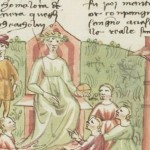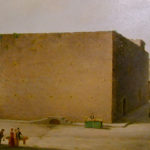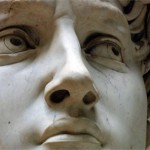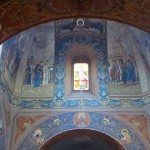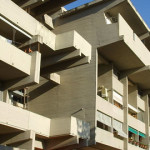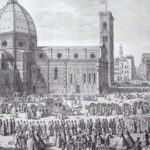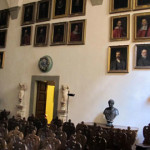Gabriella Battista
Versione HTML: < http://duomo.mpiwg-berlin.mpg.de/STUDIES/study005/Battista-La-canonica-di-Santa-Maria-del-Fiore.html >
Il saggio analizza la canonica del Duomo di Firenze nel periodo coperto da Gli Anni della Cupola, nel suo duplice aspetto architettonico e socio-politico-culturale, al fine di comprendere la consistenza e la funzione architettonica del complesso e di conoscerne i residenti e le vicende della loro vita in comune. Attraverso lo studio sistematico della documentazione riguardante la definizione e la gestione della canonica, si ricostruiscono le tappe della creazione di un nuovo spazio claustrale, dignitoso e comodo, per il clero metropolitano: un complesso edilizio che risultasse opportunamente distanziato dalla nuova chiesa, che doveva rimanere magnificamente libera attorno a tutta la sua sagoma. Tale nuova residenza per canonici, cappellani e altri servitori del culto, confacente ai valori di residenzialità, vita comune, disciplina, fu realizzata nel fitto tessuto urbano della città medievale ad elevati costi per l’acquisto da privati di immobili via via inglobati nel progetto, secondo il ‘disegno’. Essa fu definita, nelle linee che rimasero immutate fino al XIX secolo, con una politica di adattamento di beni precedentemente adibiti ad abitazione civile, racchiudendoli in un chiostro chiuso alla circolazione urbana con un unico, decoroso ingresso verso la chiesa e il suo portale ‘dei canonici’. Per comprendere quali fossero i doveri a cui erano sottoposti canonici e cappellani, sono state esaminate le costituzioni sinodali di periodi precedenti. Dai documenti sono emerse, inoltre, le condizioni di vita comune nella canonica, secondo le costituzioni che ne regolavano la disciplina: dall’assegnazione degli alloggiamenti in base all’anzianità, al luogo dove riunirsi per condividere i pasti e, infine, alla necessità di avere piccoli ambienti personali, dove poter meditare e studiare. I canonici residenti appartenevano all’ambiente sociale più elevato, ma con loro convivevano cappellani, chierici, cantori, provenienti da diversi strati sociali.
The essay analyzes the residence of the canons of the Cathedral of Florence in the period covered by The Years of the Cupola with attention both to its architectonic and social-political-cultural aspects in order to define the architectural natural and function of the complex and identify its residents and the circumstances of their common life. Through the systematic study of the documentation regarding the definition and management of the close it is possible to reconstruct the steps in the creation of a new dignified and comfortable cloistered space for the metropolitan clergy: a building complex that was appropriately detached from the new church, which had to remain magnificently free around its entire circumference. This new residence for canons, chaplains and other ecclesiastical collaborators, designed to accommodate the values of residency, common life and discipline, was realized in the tight urban fabric of the medieval city at great cost for the purchase of private real estate which was gradually incorporated into the project according to the predetermined ‘design’. It was defined along lines that remained unchanged until the 19th century following a policy of adapting structures previously destined to civil habitation and enclosing them in a cloistered environment sheltered from urban circulation with a single monumental entrance towards the church and its portal ‘of the Canons’. In order to understand the duties incumbent upon the canons and chaplains it was necessary to examine the synodal constitutions of previous periods. These documents offered a view of the common life in the canonry according to the dictates of the constitutions that regulated discipline: from the assignment of dwellings on the basis of seniority to the designation of places for the sharing of meals and, finally, the necessity of providing small personal spaces for meditation and study. The resident canons belonged to the highest rank of society, whether they were of ancient lineage or members of the gens nova emerging in the mercantile world, but they cohabited with chaplains, clerics, cantors, from all the various social […]
Download Pdf
Da: http://duomo.mpiwg-berlin.mpg.de/STUDIES/studies_ita.html
